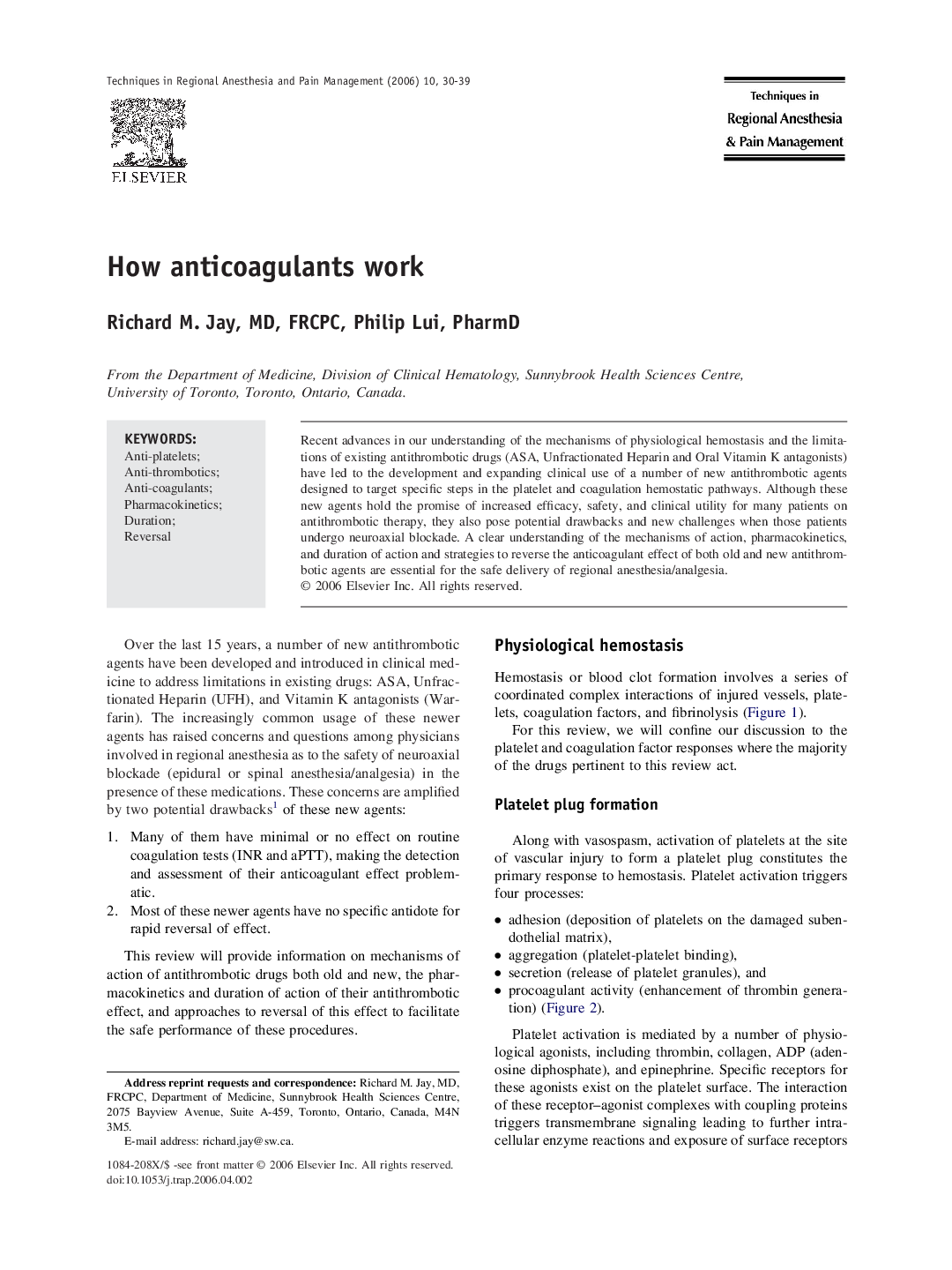| Article ID | Journal | Published Year | Pages | File Type |
|---|---|---|---|---|
| 2772526 | Techniques in Regional Anesthesia and Pain Management | 2006 | 10 Pages |
Recent advances in our understanding of the mechanisms of physiological hemostasis and the limitations of existing antithrombotic drugs (ASA, Unfractionated Heparin and Oral Vitamin K antagonists) have led to the development and expanding clinical use of a number of new antithrombotic agents designed to target specific steps in the platelet and coagulation hemostatic pathways. Although these new agents hold the promise of increased efficacy, safety, and clinical utility for many patients on antithrombotic therapy, they also pose potential drawbacks and new challenges when those patients undergo neuroaxial blockade. A clear understanding of the mechanisms of action, pharmacokinetics, and duration of action and strategies to reverse the anticoagulant effect of both old and new antithrombotic agents are essential for the safe delivery of regional anesthesia/analgesia.
